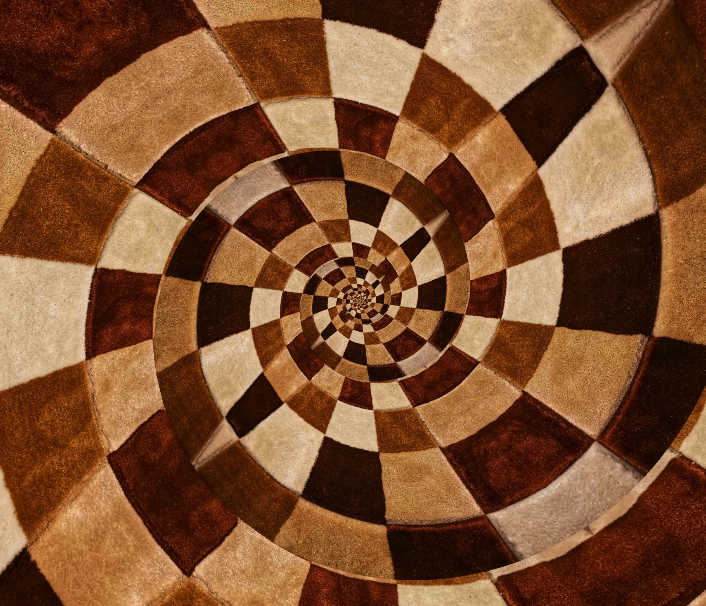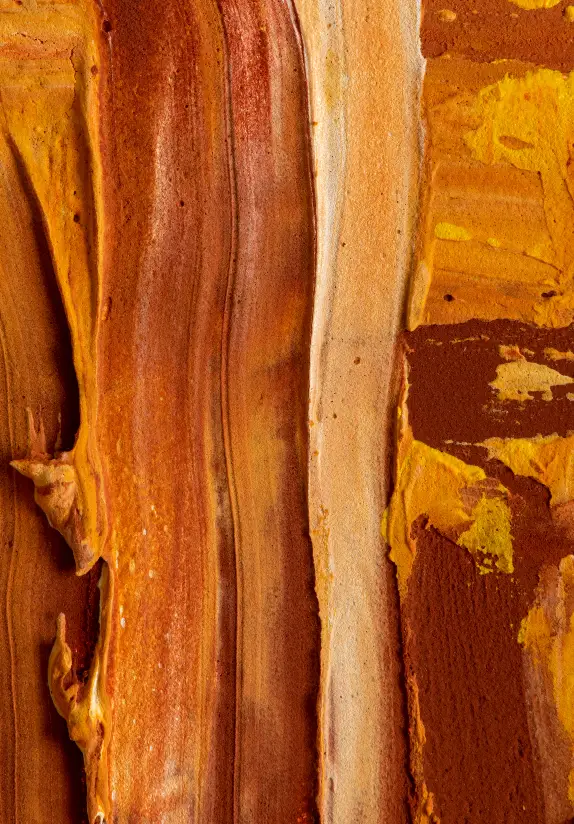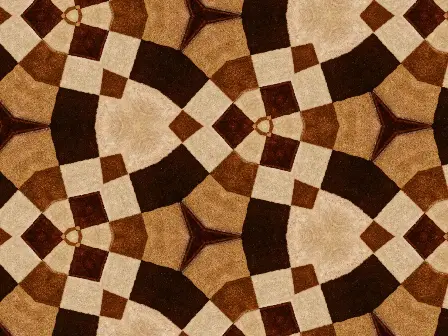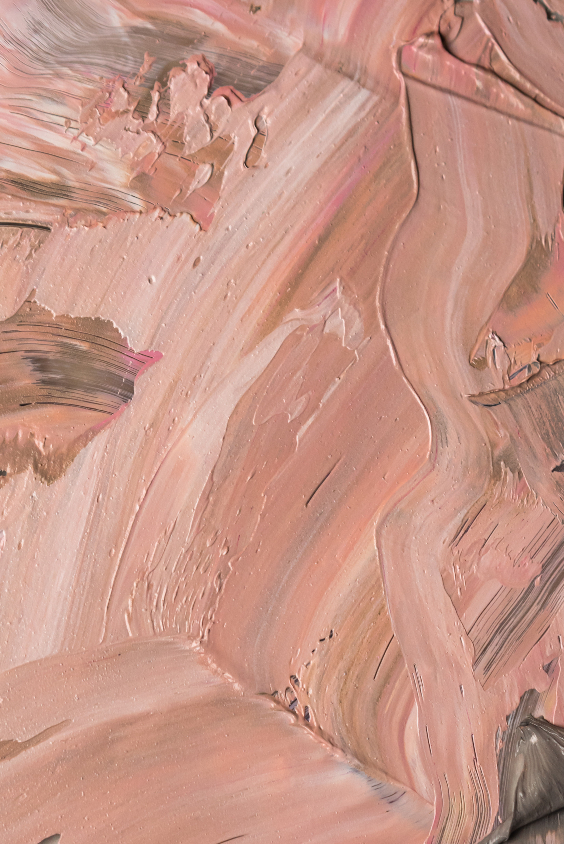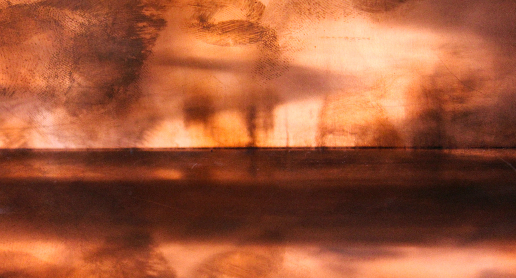Primary colors can create an infinite number of shades related to the rainbow, yet only a specific combination can make a true brown. Come and learn the best secrets to making brown shades easier with these simplified tips for mixing.
How to Make Brown by Mixing Two Colors?
Among several ways to make the color brown, all depend on which primary color or even the secondary color is used to create brown. These brown colors will all have various differences in shade and tone, so no two colors of brown will be the same.
As long as you follow the rules for mixing these colors and have a formula that you can repeat with success, you can't go wrong.
It all starts with using a color wheel for reference, which is the primary method that most new artists will use to mix primary colors. Without using a color wheel, you can't guess which opposition colors will create brown or the proper secondary shades that help you create brown shades.
This is the first step on what two colors can make brown you'll want to master.
Please look at this drawing and sketching video course I have created. Use this link.
You May Also Like:
- How to Mix Skin Tones With Primary Colors
- How to Mix and Blend Watercolor Pencils
- Can You Sketch Over Acrylic Paint?
- Should You Sketch Before Watercolor?
Primary Colors are Used to Mix Different Shades of Brown
When you hear about primary colors, you're limited to a range that will give you any type of secondary colors whatsoever. There are essentially 3 colors that are essential primary colors and include red, yellow, and blue.
These colors are used to create secondary colors and include orange, green, and violet. The critical thing to remember is that secondary colors are easier to make brown, but primary colors are limited.
The primary colors that make brown will always include green and red. These two primary colors will mix this shade with little effort. After this, you can use a combination of primary and secondary colors to make shades of brown.
WHAT IS THE MIX TO MAKE BASIC BROWN?
You might be surprised to know that there are formulas to make brown very quickly. These colors include yellow and black. It's straightforward if you have limited colors and want to have a great basic brown.
With just 2-parts yellow added to 1-part black, you can achieve a rich brown color with the right tone. When mixing green and red, this mixture is just a 1:1 ratio, however equal amounts will change as you add more or less.
The difference between these two browns will obviously look different, but most will agree that yellow and black make green. Yet something strange happens when you double the amount of yellow is added. This causes the black to break down more in its color spectrum, helping to reveal a brownish tone rather than green.
HOW TO MIX SANDY BROWN?
To get this color, you need to use a combination of primary and secondary colors to get a sandy brown color. You'll need purple and yellow in equal parts to get the right shade of sandy brown. But to reach a purple color, you simply mix 1:1 part of blue and red and then 1-part yellow to achieve the sandy brown color you need. The level of adjusting red will make the sandy brown color a bit warmer.
Using a little bit of white will make the color lighter and black to get darker tones. These contrasting colors further allow you to play with light and dark. Aside from washes, this can work well for watercolor but not more opaque acrylic colors.
HOW TO MIX TAN?
It's way too easy to say that brown and white will get you the perfect shade of tan. But this is often how it works. You can use the basic formula to get a brown color and then add white to lighten the shade to get the best tan color. Tan is also given a bit of warmth when you adjust the tone by adding a slight touch of red. This will give it more of the color you see with camel colors or washing chamois.
Less is more with making the ideal shade of tan, so be careful how you add your red to a brown and white mix. You can easily ruin the tone with too much red making it appear more sepia or peach-like.
HOW TO MIX BEIGE?
This is another simple color that all starts with yellow and is mixed with white. There's a second method that includes a small amount of coffee brown, yellow, and white. The addition of brown gives this version of beige the warm hue you would expect with good beige.
There is also a third option that comes from mixing black and white to make grey. This is then mixed with yellow to get a delicate shade of beige.
As mentioned before, yellow and black can create brown when adjusted to 2:1 by the ratio. Any of these mixtures will create shades of beige, so choose the formula that works best for you.
HOW TO MIX CHESTNUT?
Chestnut is a very ruddy color, just like raw sienna. It's primarily a red color that is muddied with using small amounts of yellow to achieve chestnut. You'll reach raw sienna faster than it takes to finally reach chestnut.
You can also try mixing yellow into purple until you get chestnut. The same also applies to mixing yellow with a combo of red and green. You'll get different grades of brown from both of these mixes, so stick to red and yellow.
Red and green will make a delicate brown. However, this mixture heavily relies on the yellow to transform it into that warm red hue that chestnut is known for.
WHAT TWO PAINT COLORS MAKE LIGHT BROWN?
Two of the best methods for making light brown will mix primary colors with secondary colors. These will give you a better blend if you want to make light brown depending on the secondary color you're using.
The first formula is mixing orange with a small amount of blue. The second will do the same thing with adding yellow to purple.
The colors that create orange and purple both combine primary colors to achieve these secondary colors. If you have a full palette of colors already, then these colors will work just fine.
Aside from taking basic brown and adding a little bit of white, mixing actual colors is tedious but ultimately more satisfying if you don't have brown on hand to start with!
WHICH COLORS MAKE DARK BROWN?
One easy way to make dark brown from two colors in a jiffy is by adding red to black. The ratio is about 3:1 red to black, but you might see better results using a 4:1 ratio instead. There is also mixing blue into orange to get a dark shade of brown.
Another good mixture is purple mixed into yellow. Once you find a recipe to make brown, it's easier to get darker shades by adding a touch of black.
Opaque colors will always react better than transparent colors, so black and white are proven to be effective this way. Watch out if you're using watercolors that need basic formulas to get natural dark brown tones.
LIST OF COLORS USED TO MIX BROWN:
• Blue and Brown
When mixing blue and brown together, the color isn't that remarkable at all. The color you get is more of a muddied color that will appear to be a deep umber, if anything else. You have to be careful with how much blue that you add since this can start to look similar to dark teal or even bluish-green.
To get the best shade of dark umber, add small amounts to brown when you start mixing and add tiny increments as you go.
You can't change the shade once you've hit that level of brown, so add small dabs or drops at a time while mixing your colors.
• Red and Yellow
Red and yellow are the recipe to get the color orange and 1:1 using red and yellow. I've found the color is richer when you use a little bit more red than yellow, but the yellow makes orange colors appear pale. It takes practice to make a true orange color.
Once you reach a rich orange color, adding a blue bit will get you closer to making brown colors. If you're making a large amount of brown, try to limit your supply of orange so you can keep this color dedicated for other painting tasks.
• Green and Red
Green and red are one of the fastest ways to make brown paint colors. Oddly enough, it works the opposite when combining projected light colors.
You'll get yellow when these two colors overlap, and that is why LED light colors can be combined with Red, Green, and Blue to make nearly any kind of color combo for RGB LED lights. Other than that little bit of trivia, red and green paint is mixed 1:1 to get a general shade of brown.
After this, it can be further balanced with orange and yellow to achieve various shades of brown. Getting lighter or darker shades is furthered with adding black or white, so these can be adjusted as you need.
•Titanium White
This is the standard color to light brown colors if you can't make transparent colors. Titanium white is an opaque color perfect for making any dark brown color lighter if you over-mix colors while getting a brown color.
It's better to add small amounts to a dab of brown when blending and matching colors. This is especially helpful if you come back to a painting months later and want to match your original colors.
When you do any painting with opaque colors, a painting chart should list all of the primary colors you use. It's just like a checklist that helps you to match your paint colors appropriately. These are called Paint Swatch Charts and are your golden paint reference chart for mixed colors.
• Red and Blue
The combination of red and blue using opaque colors will give you violet or purple, depending on how much of each color you intend to use. This is another perfect secondary color that you'll mix with yellow to get a brown color.
These formulas need to be recorded on how much you've mixed together but are generally 1:1 by volume. When you have different reddish or bluish colors, the tone of your brown that you'll get will be totally different.
These base colors need to be as primary as they get, so when you hear names like fire-engine red or Cobalt blue, it will get you other shades of brown you might not be happy with. To get brown, you'll need to use yellow to reach the brown color you want to use.
•Orange and Blue
These two colors will give you a great shade of brown. Since orange is mixed with red and yellow, adding blue will immediately muddy the orange and make it a brown color right away. These colors can range from the color of a brown paper bag all the way up to dark coffee.
You need to use a true blue if you don't want to have greenish overtones that will ruin your brown color right away. Using more violet colors will give you richer browns in return.
The best is sticking to blue, which is as primary as it comes. It is recommended to have brown tones that you'll recognize without seeing greenish-orange color floating around.
Then again, if all you have are blue colors that aren't primary blue, you'll either need to adjust your blue to get it closer to being dark enough to your target before it gets mixed with orange.
• Purple and Yellow
Mixing purple and yellow can be problematic if you haven't mixed your purple to the right shade. The same applies to the shade of yellow and will ruin your brown color if you use bright yellows to mix into purple. It's an accident waiting to happen if you aren't paying attention.
If you have the best primary yellow that comes with your color kit, matching the purple is your only concern aside from mixing them together.
Stay away from lighter yellow, such as bright yellow and canary yellow, as these are simply too bright for making brown colors look realistic. Another problem is using premade purple that isn't a true purple that won't give you the right kind of brown without adjusting it further with additional colors.
•Red and Green
Red and green are naturally opposing colors that will try to cancel each other when they become mixed. They are clearly strong primary colors that stand alone all by their designated color.
As soon as you mix them together in equal amounts, the resulting muddy color that comes out is a brilliant brown color that is a whole new color. Even though it's a mixed muddy color, the combo is appealing to become a natural earth tone.
From this point, it can go lighter or darker, with little bits of red or green added when you adjust for tone. The same will happen with adding white or black when making it lighter or darker.
• Blue and Orange
Blue and orange is a simple mixture that allows you to mix a secondary color with a primary to make brown. The balance that makes the best orange color needs to be nice and bright without looking too bland, like an overly sweet citrus fruit.
Orange is a tough color because it needs to have the correct depth t make it dark enough to become a true orange. This is why using the right amount of red to yellow is often hard to mix.
I like to mix my orange slightly darker with red but use a small amount of gold embossing powder into the yellow to give the orange sheen a little bit of sheen. You have to be very careful since heat will cause the embossing powder to get puffy. It also mixes into acrylic color very quickly, aside from regular gold powders that are available.
ADDITIONAL QUESTIONS:
• Does Red Make Brown?
Red is essential when mixing blue or green colors together to make brown. Red is also a great color that you'll use to warm up colors making brown appear richer rather than muddy. The color spectrum of red contains the primary tone, which helps cancel the darker tones from blue or green, keeping brown colors fresh.
If you add too much blue or green, the brown color will look murky rather than living and natural.
It's a color that you want to use with blending and mixing, so life comes back to mixed colors, especially those used to make brown.
Everything from raw sienna to chestnut will include a generous amount of red, depending on the shade of brown you're looking to get. No matter what two colors can make brown, red will always be included in making natural brown colors.
• Does Yellow Make Brown?
Yellow is the building block of brown and will be a natural color that turns brown over time. In nature, yellow flowers turn brown after the moisture is gone from their petals.
When it comes time to mix brown colors, yellow gives select mixed colors such as purple and violet can trick the eye into seeing brown. When you want to make colors like tan, beige, light brown, and others shades in the brown spectrum are easy to achieve.
Then again, without yellow, you can't make orange without mixing red with yellow. This primary-color is essential, like all the other primary colors that you'll learn to mix.
By practicing how to mix your primary colors, you can reduce the habit of buying premade colors.
This is what traditional artists have done for years and is essential for controlling your color creation ability. Without these skills, you won't be able to problem solve a paint problem on the spot.
Primary colors can create an infinite number of shades related to the rainbow, yet only a specific combination can make a true brown. Come and learn the best secrets to making brown shades easier with these simplified tips for mixing.
Create Art With My Favourite Drawing Resources
General Drawing Courses. I like Udemy if you want to develop your knowledge of drawing techniques. Udemy is an excellent choice due to its wide range of creative courses and excellent refund policy. They often have monthly discounts for new customers, which you can check here. Use my link.
Sketching and Collage. Take a look at this sketching resource I have created. Use this link.
Proko. Is one of my favorite teachers who surpasses in the teaching of Anatomy and Figure drawing. Prokos course breaks down the drawing of the human body into easy-to-follow components aiding the beginner to make rapid progress. For this, I really like Proko.
Art Easels. One of my favorite ways to draw is by using a drawing easel, which develops the skill of drawing on a vertical surface. The H frame easel is an excellent vertical way to add variety to the style and type of marks you create when using a drawing board.
To see all of my most up-to-date recommendations, check out this resource I made for you.

